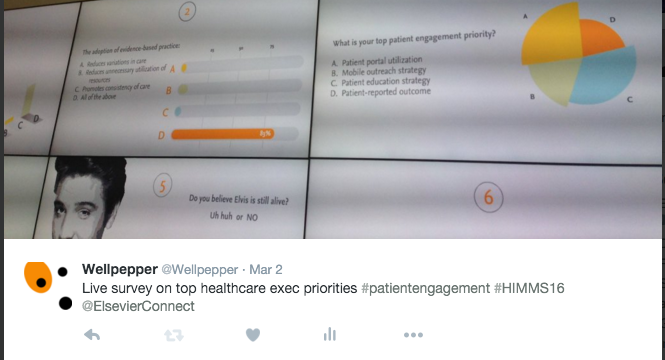A walk through the trade show floor, and a glance at some of the sessions at HIMSS, quickly indicates that patient engagement is everywhere, which is great because an empowered patient is key to improving outcomes and lowering costs of care. There is still a lot of noise in this space however, with anything from wayfinding applications to billing services being billed as patient engagement. Let me set the record straight: making sense of things that are very confusing and often poorly designed, like hospitals and healthcare billing is not patient engagement, it’s explanation.
A walk through the trade show floor, and a glance at some of the sessions at HIMSS, quickly indicates that patient engagement is everywhere, which is great because an empowered patient is key to improving outcomes and lowering costs of care. There is still a lot of noise in this space however, with anything from wayfinding applications to billing services being billed as patient engagement. Let me set the record straight: making sense of things that are very confusing and often poorly designed, like hospitals and healthcare billing is not patient engagement, it’s explanation. That said, there are many innovative companies and healthcare organizations who are taking patient engagement seriously.
Here are 5 impressions or things heard at HIMSS about patient engagement and the state of healthcare IT:
- There are a lot of solutions in this space/competition is good. While there may be companies that have joined the space because patient engagement is a hot topic, real competition shows a real need and market.
- Clinical workflow does not equal patient engagement. True patient engagement solutions are designed around the needs of the patient.
- Engagement does not equal alignment. While this was said about physicians it’s also applicable to patients. A surgical patient can’t help but be engaged, but are the patient and physician aligned on the patient’s goals.
- Healthcare IT is emerging from the EMR era. Meaningful use drove widespread adoption of EMRs and monopolized IT resources for the past X years. IT is now ready to take a seat at the table and proactively suggest solutions to the clinical side of the house.
- People are asking how a solution is different rather than why they need a solution. This is a huge shift: at our booth we spent a lot less time explaining what we do and how we do it.
We’re looking forward to what the next year will bring. It seems like we’re at the starting blocks for some real value-based implementations of patient engagement solutions.
